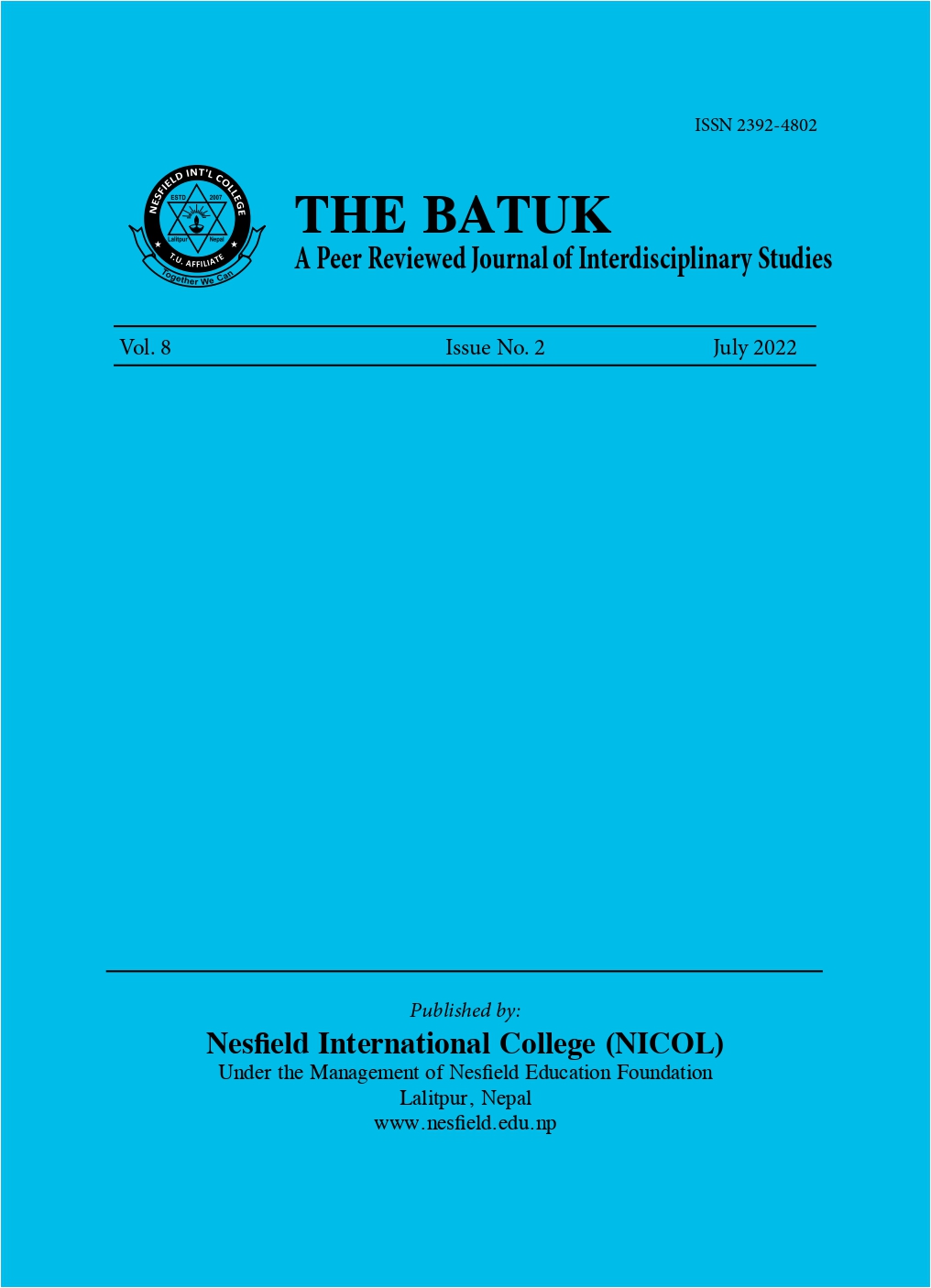Melanie as a Subaltern Woman: An Analysis of JM Coetzee's Disgrace
DOI:
https://doi.org/10.3126/batuk.v8i2.47015Keywords:
consciousness, exploitation, injustices, marginalization, subalternAbstract
This article reports how Melanie was subaltern character in the novel Disgrace written by J M Coetzee. As a literary qualitative research, this paper utilized subaltern theory developed by Ranajit Guha and Gayatri Chakravorty Spivak to analyze lived experiences of injustices and exploitation over her. The findings of this study revealed that Melanie as a subaltern woman; victimized and suppressed from racial, gender and other various layers of injustices. Likewise, she belonged to minority Muslim community and, due to which she had to face tremendous injustices. Although she was an educated university student, was many times raped by her own professor; consequently, she was tortured with psychological pain and very often faced family conflicts indeed. As a result of patriarchal ideology, she remained silence and further became submissive and docile character. However, the findings further exhibited that after being exploited for long; she developed consciousness about the injustices over her; thereby, she rejected such injustices by forwarding the case against her own professor to the university. The findings have overarching consequences which will contribute to explore further issues of subaltern in the novel.
Downloads
Downloads
Published
How to Cite
Issue
Section
License
This license enables reusers to distribute, remix, adapt, and build upon the material in any medium or format for noncommercial purposes only, and only so long as attribution is given to the creator.




